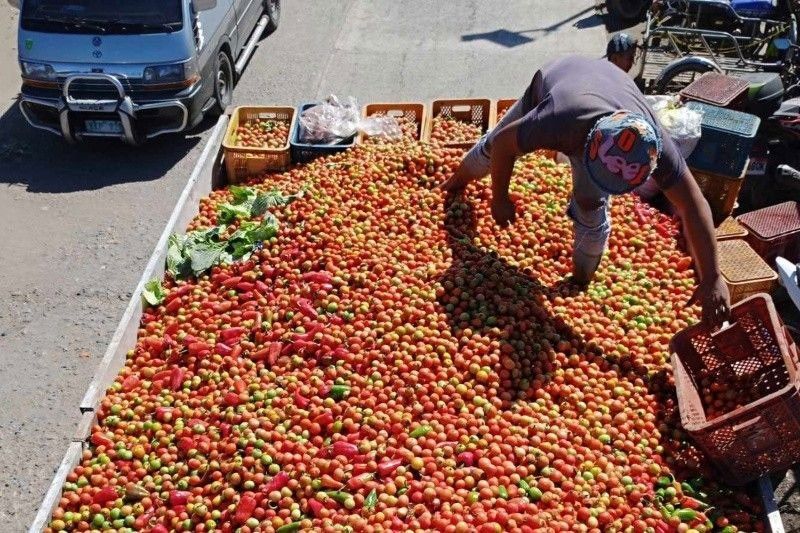DA: 30 percent of crops wasted due to poor logistics

MANILA, Philippines — Nearly a third or 30 percent of the country’s agricultural produce is wasted because of a poor logistics system, the Department of Agriculture (DA) said yesterday, as it cited the need to invest “heavily” in post-harvest facilities to reduce losses and lower commodity prices.
Agriculture Secretary Francisco Tiu Laurel Jr. said a lot of infrastructure, including agri-industrial ports and cold storage facilities, must be built to address the oversupply of vegetables and other crops.
“We also have a very big move on the logistics – 30 percent of our produce, especially of vegetables, is gone because of wastage because of the poor logistics system in our food supply chain. If we can lessen, or hopefully almost eliminate, those losses, that will be equivalent to at least 10 to 15 percent less cost for our vegetables and high-value crops like fruits,” Tiu Laurel said.
Tiu Laurel admitted that there is no accurate data to quantify farm losses and that the 30 percent estimate was based on his experience in the business sector as owner of a cold chain logistics company.
According to Tiu Laurel, the country is losing about 12.7 to 15 percent of its rice production or about 450,000 tons per year because of the lack of post-harvest facility.
“No major post-harvest facility was funded by the government in the last 40 years; only small ones, piecemeal which is actually irrelevant or useless, what a waste. So, that’s why we need really to fund these projects but we cannot build small, we have to build bigger,” the agriculture chief said.
“Let’s not say no investment – it’s like minimal investment... I cannot say there is none but the effect of the investment in the past administrations is insignificant. I’m not privy to the direction of the past administrations, but for me, I just can say it was a wasted opportunity.”
In post-harvest facilities alone, P93 billion is needed in the next three years to save P10.7 billion annually on wasted rice and corn, he said.
“For cold storage, my budget this year is only P1 bullion so I will focus all of that on four cold storage (facilities) to address that vegetable issue; but that can only cover part of Luzon. So, if we try to solve the problem as soon as possible, assuming 2025… I need additional P5 billion to address the vegetable cold storage issue of the whole nation,” the DA secretary added.
Tiu Laurel said the government would be building a 5,000-pallet position cold storage for high-value crops and vegetables to serve cooperatives and farmers and address the oversupply problem.
He said the issue should also be addressed by local governments since the function related to agricultural workers has been devolved to them.
Modernization
The DA has revealed its three-year plan aimed at making the agriculture and fisheries sectors a viable investment option, aligned with the goal to modernize the sector.
Tiu Laurel unveiled before Cabinet members yesterday his plan to increase agricultural productivity, lower food cost, ensure food security and make farming and fisheries a more bankable investment alternative.
“Our goal is to modernize Philippine agriculture to spread benefits across the entire value chain,” he said.
To achieve this vision, Tiu Laurel laid out a three-year plan that involves expanding and improving available agri-fishery areas to increase production as well as mechanize and modernize agriculture and fishery production systems.
The plan also seeks to develop post-harvest systems and infrastructure as well as efficient logistics systems for input and production output.
He said the multi-year program on post-harvest facilities will cost around P93 billion, which could be recovered in under nine years.
He added that the DA will appoint an assistant secretary for logistics to help optimize costs for everyone involved in the value chain, from producers to consumers.
The agriculture chief pointed out that its program to digitize DA operations seeks to uplift the agri-fisheries sector by equipping decision makers, food producers and consumers with accessible technology and advanced tools.
Moreover, the DA chief is also looking at pushing legislative reforms to update certain laws and regulations that will allow the agency to better respond to challenges facing the farm and fisheries sector.
Galunggong price going down
The DA is expecting the prices of galunggong or local round scad to go down in March because of the end of the closed fishing season this month.
Speaking to Malacañang reporters yesterday, Tiu Laurel noted that the season of galunggong fishing in the Philippines is from March to June.?“The catch won’t be that much by the lifting (of the closed fishing season) by February. But by March, I expect prices to drop,” he said in Filipino.?“If the price is P200 (per kilo) now, it may decrease to P150, P130.”
Data from the DA showed that prices of galunggong ranged from P200 to P320 per kilogram as of Jan. 15, while imported galunggong was from P180 to P260 per kilo. — Romina Cabrera, Catherine Talavera
- Latest
- Trending


























